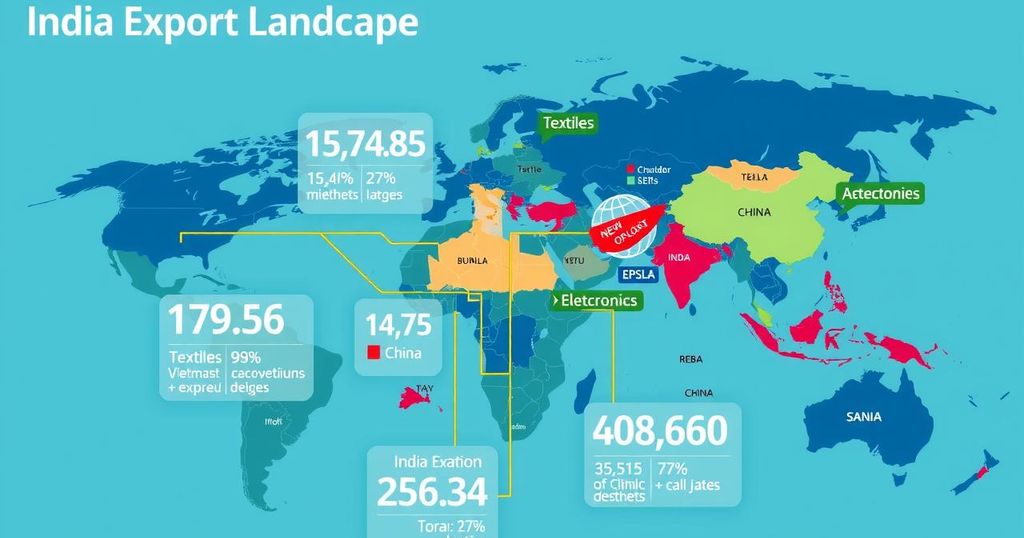Impact of Trump Tariffs on Indian Exports: Opportunities and Challenges

India, the 12th-largest exporter worldwide, now faces a 27% tariff on US exports, creating challenges yet positioning it better than key competitors like China and Vietnam. The automotive, textiles, gems, agriculture, and electronics sectors are affected differently, with textiles and gems likely experiencing less adverse impacts. Ongoing trade negotiations may offer potential relief.
In 2023, India ranks as the world’s 12th-largest exporter with a total export value of $441 billion. However, it now confronts a 27 percent flat tariff on all exports to the United States. This shift presents challenges for Indian exporters, although India’s situation may be comparatively advantageous against major rivals such as China, Vietnam, Bangladesh, and Indonesia, which face steeper tariffs ranging from 34 to 49 percent.
Among the various sectors, the automotive industry stands out with a newly imposed 25 percent tariff on imported automobiles. Major Asian manufacturers like Toyota, Honda, and Nissan are likely to face significant impacts. Nevertheless, India’s automobile exports to the United States remain low, representing only 0.13 percent and 3 percent of its passenger and commercial vehicle exports, respectively, limiting adverse effects. Tata Motors might experience indirect repercussions as Jaguar Land Rover generates around 23 percent of its revenue from the US market.
In the realm of textiles, India is poised to benefit from the new tariff framework, with competitors such as Vietnam and Bangladesh subject to higher tariffs of 46 percent and 37 percent, respectively. India’s textile exports account for 8 percent of US textile imports, totaling $9.7 billion, while textiling only contributes 2 percent to India’s GDP. This reduced vulnerability offers a buffer against external economic pressures.
India retains a significant position in the gems and jewellery market, exporting 12.99 percent of total US imports in this category, worth $11.58 billion. Competing exporters like France, Italy, and Thailand hold smaller market shares, reinforcing India’s strong foothold. Hence, Indian exporters may not fare as well against the tariffs relative to their competitors.
The agricultural sector is also affected by the 27 percent tariff on key exports such as Basmati rice, buffalo meat, and wheat. Despite this, India may maintain a competitive edge in processed food items compared to rivals due to pricing advantages. However, Mexico’s advantageous tariff structure under the US-Mexico-Canada Agreement (USMCA), along with its geographic proximity to the US, may diminish India’s competitive position in fresh and packaged foods.
In the electronics sector, which has an export value of $14 billion to the US, the new 27 percent tariff will result in increased prices. India, however, is still faring better than competitors Vietnam and China, facing tariffs of 46 percent and 34 percent, respectively. While Mexico retains a tariff-free advantage under USMCA for compliant goods, non-compliant products will incur a 25 percent tariff, impacting the competitive landscape.
In summary, while India faces a challenging landscape due to the imposition of a 27 percent tariff on exports to the United States, it is strategically positioned in comparison to its main competitors such as China and Vietnam. Sectors like textiles, gems, and jewellery, although impacted, may not suffer as severely as expected. Furthermore, the potential for a bilateral trade agreement with the US may offset some of these challenges, fortifying India’s export market in certain areas despite the tariffs.
Original Source: www.business-standard.com




